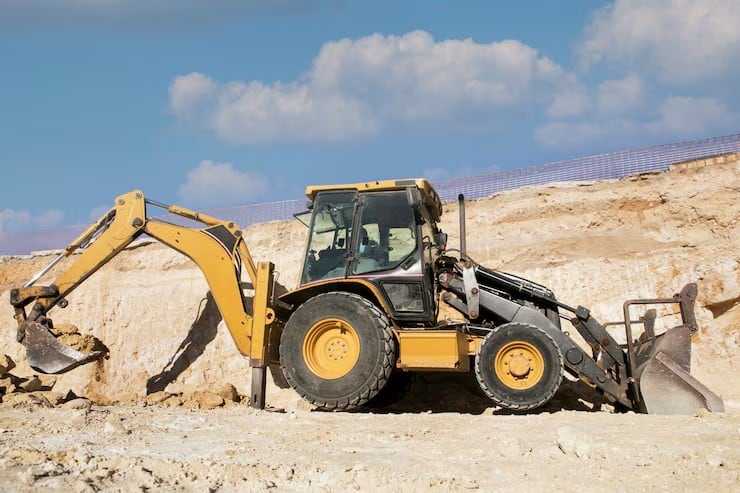
Have you ever thought about how one small machine can handle the job of many?
That’s exactly what happens with skid steer loaders on a construction site. They may not be as large or heavy as other equipment, but they pack a surprising amount of strength and flexibility.
What makes them even more useful is how they can take the place of multiple different machines, saving both time and space. When projects are running on a tight schedule and space is limited, using one machine that does many tasks becomes a smart choice.
Let’s take a simple look at how skid steers can manage so much with ease on construction sites.
A Compact Machine That Doesn’t Feel Small
One of the first things people notice about skid steer loaders is their size. They’re compact, easy to move, and don’t take up too much space. But despite their small frame, they are built tough. These machines can lift heavy loads, push material, and even handle tools that usually need bigger equipment.
Quick to Move Around the Site
Time is money on construction sites. The longer it takes to complete a task, the more it adds to the project cost. Skid steers move fast—not just in terms of actual speed, but also in how quickly they can switch between jobs. One moment, they’re moving soil, and the next, they’re carrying tools or clearing waste.
Switching Attachments Makes All the Difference
The main reason skid steer loaders can replace multiple machines is because of how easily they work with different attachments. You can start your day using a bucket to carry gravel, then switch to a pallet fork to unload materials, and later attach a brush to clean up the site—all using the same machine.
Here are just a few attachments that turn a single skid steer into a multi-tasking hero:
- Auger – for drilling holes
- Trencher – for digging narrow trenches
- Pallet Fork – for lifting and placing materials
- Hydraulic Breaker – for breaking concrete
- Grapple Bucket – for picking up debris or scrap
- Sweeper – for site cleaning
Perfect for Site Preparation and Cleanup
Before construction starts, the area needs to be cleared, levelled, and prepared. Skid steers are great at these jobs. With the right blade or rake, they can remove brush, even out soil, and clear rocks or loose material.
After the work is done, the same machine can be used to clean up the mess. Attach a sweeper, and you can make the whole site neat before handing it over. This makes the start and end of your construction timeline easier to manage with just one piece of equipment.
Smarter Movement in Tight Spaces
Larger machines often need space to turn, park, or reverse. In smaller plots or inner-city locations, this becomes a problem. Skid steer loaders solve this by turning within their footprint. That means they can pivot without needing extra room.
Cost-Effective for Long-Term Use
Hiring or buying multiple machines increases maintenance costs, operator expenses, and space requirements. By choosing one machine with multi-use capability, like a skid steer loader, project managers can reduce these extra costs.
Simple Maintenance and Easy Storage
Since skid steers are smaller, they’re easier to service. You can access the engine, filters, and parts without needing big tools or a service crew. Routine checks can be done faster, which means less downtime.
When not in use, the machine can be stored in regular sheds or garages. You don’t need large parking areas or heavy-duty transport trucks for moving it. This is especially helpful for contractors who work on short-term or seasonal projects.
Strong Enough for Big Jobs
People often think compact machines are only good for light work. But that’s not true for modern skid steer loaders. They are built with powerful engines, strong hydraulic systems, and durable frames. These machines can easily lift heavy materials, handle rough surfaces, and keep working throughout the day without wearing down.
Support for Different Project Types
From roadwork and construction to landscaping and property maintenance, skid steers are used everywhere. Whether you’re building a new driveway, setting up drainage, or clearing land, one machine with the right attachments can handle it.
This flexibility is similar to what you find in mini excavators. In fact, many contractors use both together, skid steers for moving and carrying, and compact excavators for digging and trenching. If you’re considering a full setup, you can explore heavy equipment for sale to see how they can complement your equipment fleet.
Reliable for Daily Use
A machine is only useful if it can handle regular work without causing delays. Skid steer loaders are designed for daily use on busy sites. With tough tires or tracks, weather-resistant frames, and simplified control systems, they keep working through dirt, mud, rain, and heat.
Conclusion
Skid steer loaders have proven that you don’t always need many machines to get the job done. With the ability to handle multiple tasks through attachments, move easily in tight spaces, and reduce operation costs, these machines are becoming a regular part of smart construction planning.



